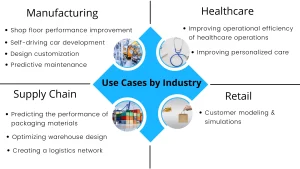Ensure that your API testing is working properly by using a few simple techniques. Make sure that you collect your results, create test cases, and automate the documentation process.
Automate the documentation process
Creating documentation for API testing is an important part of the process. However, the documentation process can be cumbersome and time consuming. However, automating the documentation process can help reduce the burden.
There are many tools available to automate the documentation process for API testing. These tools help you to create documentation by generating code examples, as well as automatically adding documentation to methods. These tools can be used with a variety of programming languages.
Some tools offer a preview feature, so you can see your changes before you push them to production. You can also store your documentation in version control software, which will help ensure that your documentation stays up-to-date.
Set up a good testing environment
Creating a good testing environment for API testing is important to verify the functionality of a website. Testers need to be able to access and test data without affecting the real world. Having a good test environment ensures a higher success rate in software testing.
Creating a good test environment involves setting up the test hardware, software and a database server. The type of environment needed depends on the application being tested. For example, desktop applications may require different OS for testers.
When creating a test environment for API testing, the design team needs to analyze the requirements for the test environment. They will also need to prepare a list of hardware and software needs. In addition, they will need to get a formal confirmation for the testing sector setup.
Create test cases
Creating test cases for API testing involves learning a new testing framework and format. This process is essential to ensure that APIs work well against known input configurations. However, it does not always provide a direct return on investment.
API testing is a step in the development process for any application. It helps you to analyze the web user interface, databases and endpoints. It can be used to determine whether endpoints are functional, in accordance with documentation and secured against potential attacks. The goal is to uncover errors, bugs and inconsistencies.
The API testing process includes setting up a testing environment and making API calls. The process is comparable to a user authentication process in a standard application.
Verify API responses
During API testing, it is essential to verify API responses. However, analyzing the API response can be a daunting task if you are unsure of how the response should be formatted. Luckily, there are several tools you can use to check your API responses. These tools analyze the data you send and compare the actual response with the expected one. This ensures you get a valid API response.
One of the tools you can use to check your response is the JSON Schema tool. The tool defines the expected data types and format of each field. It also provides examples. It can be used for documentation and automated testing.
Avoid testing multiple APIs in a test case
Performing API testing is an essential part of software engineering. It helps ensure the reliability, security and performance of the API. It can be done manually or through automation. It can also save time and money. The first step in API testing is to identify what you want to test and what APIs you want to test.
There are many resources that can help you in performing API testing. It is important to choose the right approach. If you want to test the API on a regular basis, you can use an automated testing framework. Similarly, it is also important to test APIs with different levels of authorization.
Collect test results
Performing API testing on a single endpoint or service is one thing, but the ability to collect and analyze test results is another. This is a boon to those tasked with ensuring that their API is performing as expected. Unlike UI testing, where you may have to wait for a user to complete an action, you can perform API testing on multiple endpoints simultaneously. This allows you to avoid a backlog of error messages.
ALM Octane is one such tool. It incorporates automated test results, and can even display the results on your dashboard. If you don’t have ALM Octane, you can still perform API testing on your own with AWS Lambda.






More Stories
Integrating Digital Twin Technology for Small-Scale Manufacturing and Logistics
The Developer’s Guide to Post-Quantum Cryptography Implementation
Smart Home Automation for Renters: Your Guide to a Smarter, Temporary Space